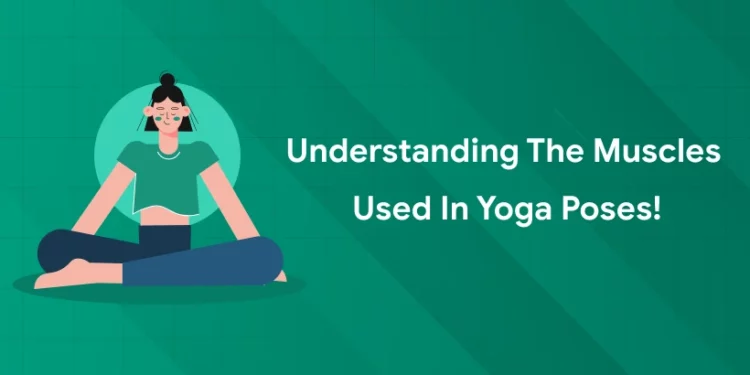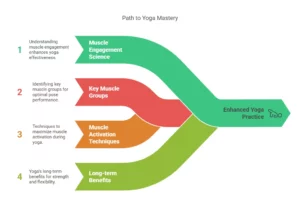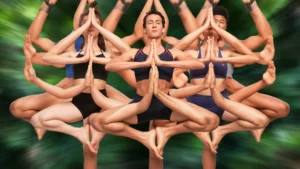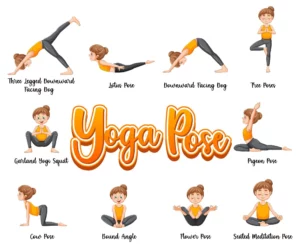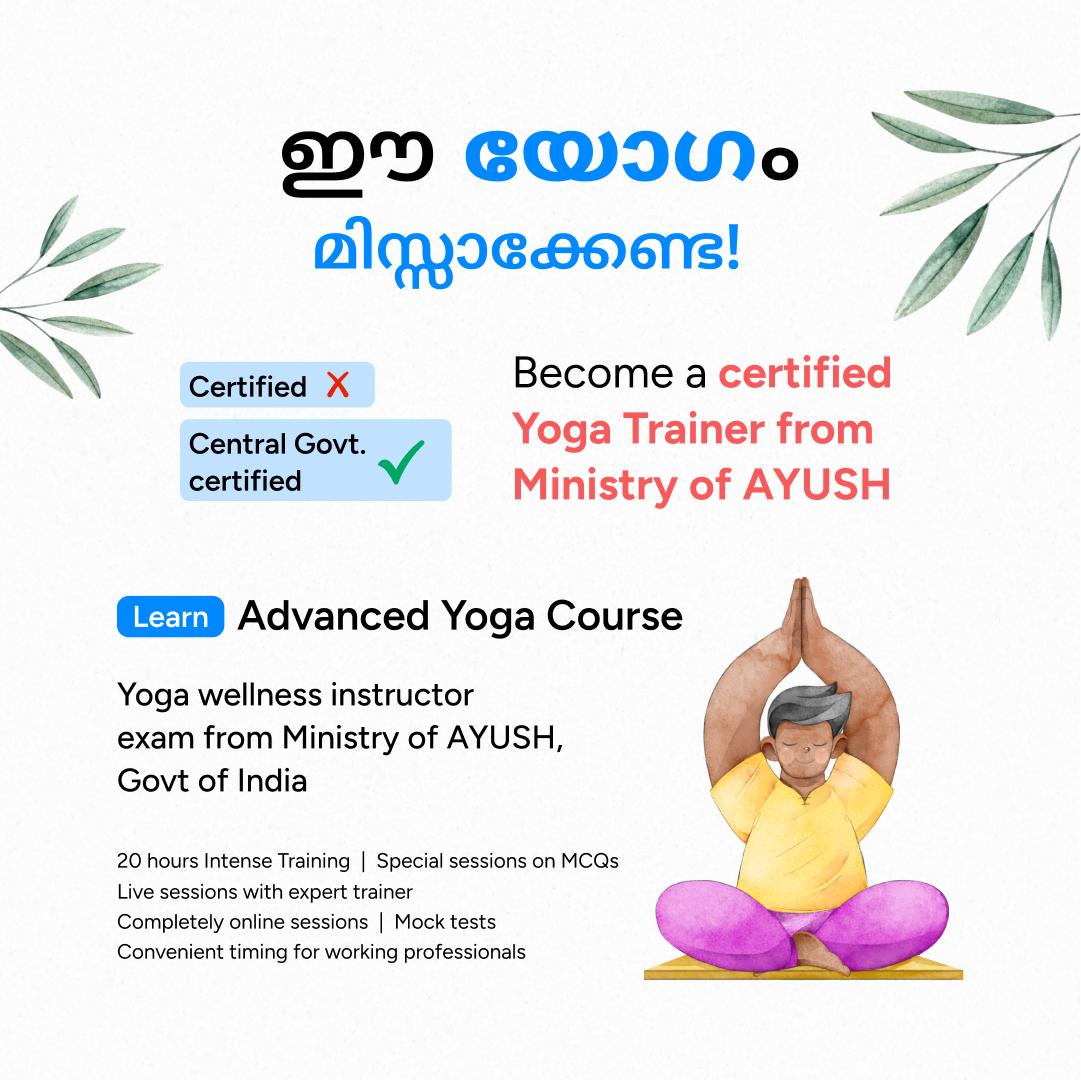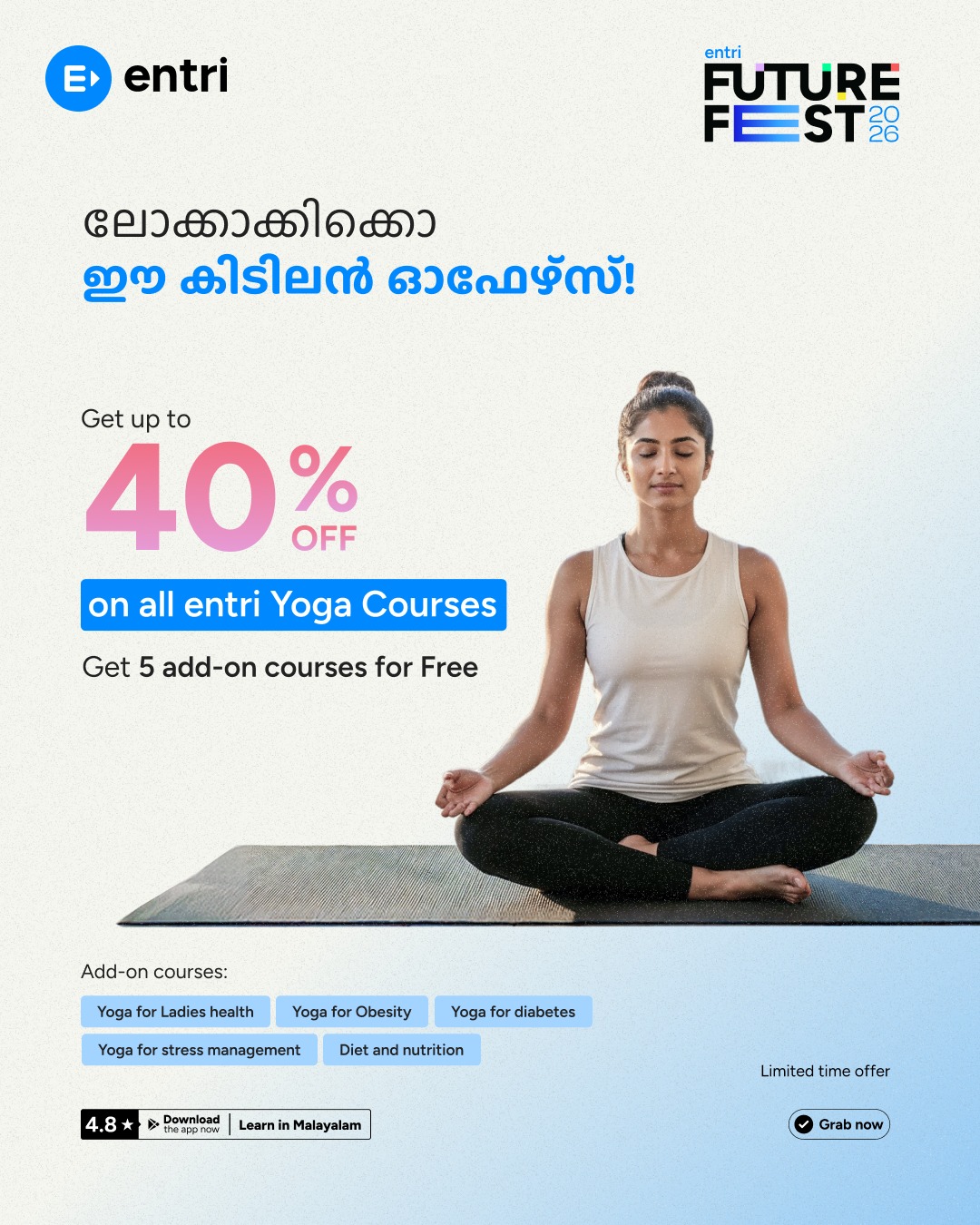Table of Contents
Yoga is often misunderstood as simply a stretching routine, but in reality, it’s a full-body workout that engages multiple muscle groups simultaneously. Whether you’re holding a Warrior pose or flowing through a Sun Salutation, your muscles are constantly working to stabilize, strengthen, and stretch. Understanding which muscles are activated in each pose can help you refine your alignment, prevent injuries, and deepen your practice.
Become a Yoga instructor from Entri, Enroll now!
In this comprehensive guide, we’ll explore:
- The science behind muscle engagement in yoga
- Key muscle groups used in different poses
- Detailed breakdowns of muscles worked in common asanas
- How to maximize muscle activation for better results
- The long-term benefits of yoga for strength and flexibility
By the end of this blog, you’ll have a deeper understanding of how yoga builds functional strength, improves mobility, and enhances mind-body awareness.
1. The Science Behind Muscles and Yoga
How Yoga Differs from Traditional Strength Training
Unlike weightlifting, which often isolates specific muscles, yoga integrates compound movements that require coordination between multiple muscle groups. This leads to functional strength—meaning the kind of strength that helps you in real-life movements, not just in the gym.
Types of Muscle Contractions in Yoga
- Concentric Contractions – Muscles shorten while contracting (e.g., lifting into Warrior III).
- Eccentric Contractions – Muscles lengthen under tension (e.g., lowering from Plank to Chaturanga).
- Isometric Contractions – Muscles engage without changing length (e.g., holding a static pose like Chair Pose).
Stabilizer vs. Prime Mover Muscles
- Prime Movers – The main muscles doing the work (e.g., quads in Warrior II).
- Stabilizers – Smaller muscles that support alignment (e.g., core in balancing poses).
Yoga enhances proprioception (body awareness), helping you engage the right muscles efficiently.
2. Key Muscle Groups Activated in Yoga
1: Which of these is the primary goal of yoga practice?
Core Muscles: The Foundation of Stability
- Transverse abdominis (deep core stability in Plank)
- Obliques (engaged in twisting poses like Revolved Chair)
- Rectus abdominis (activated in Boat Pose)
Why it matters: A strong core prevents lower back strain and improves balance.
Leg Muscles: Power and Endurance
- Quadriceps (dominant in Chair Pose, Warrior series)
- Hamstrings & Calves (stretched in Downward Dog, Forward Folds)
- Glutes (engaged in Bridge Pose, Warrior III)
Why it matters: Strong legs improve posture and reduce knee stress.
Back Muscles: Support and Flexibility
- Erector spinae (strengthened in Cobra, Upward Dog)
- Latissimus dorsi (engaged in Downward Dog, Arm Balances)
- Trapezius (stabilizes shoulders in inversions)
Why it matters: A strong back prevents slouching and alleviates desk-related stiffness.
Arm & Shoulder Muscles: Strength for Arm Balances
- Deltoids (work in Plank, Chaturanga)
- Triceps & Biceps (essential for Crow Pose, Handstand)
- Rotator cuff (protects shoulders in Side Plank)
Why it matters: Strong arms enhance stability in advanced poses.
Hip Flexors & Openers: Mobility and Release
- Psoas (engaged in High Lunge, Warrior I)
- Piriformis (targeted in Pigeon Pose)
- Adductors (stretched in Goddess Pose)
Why it matters: Flexible hips reduce lower back pain and improve mobility.
Master the art of Yoga from Entri, Enroll now!
Become a Certified Yoga Instructor
Yoga Teacher Training Course by Entri App: Master authentic yoga techniques, earn certification, and build a successful career as a professional yoga instructor.
Join Now!3. Muscles Used in Common Yoga Poses (Detailed Breakdown)
A. Standing Poses
Warrior I (Virabhadrasana I)
- Primary Muscles: Quads, glutes, shoulders
- Stabilizers: Core, hip flexors
- Stretched Muscles: Chest, psoas
Tip: Keep your front knee aligned over the ankle to protect joints.
Tree Pose (Vrksasana)
- Primary Muscles: Standing leg (ankle stabilizers, quad)
- Stabilizers: Core, glutes
- Challenge: Balance + hip engagement
Tip: Press your foot firmly into your inner thigh for stability.
B. Backbends & Chest Openers
Upward-Facing Dog (Urdhva Mukha Svanasana)
- Primary Muscles: Erector spinae, triceps, pectorals
- Stabilizers: Glutes (to protect lower back)
- Stretched Muscles: Abdominals, hip flexors
Tip: Roll shoulders back to open the chest fully.
C. Forward Folds & Hip Openers
Downward-Facing Dog (Adho Mukha Svanasana)
- Primary Muscles: Hamstrings, calves, shoulders, lats
- Stabilizers: Core, quadriceps
- Stretched Muscles: Back, calves
Tip: Pedal out your feet to deepen the stretch.
D. Arm Balances & Inversions
Crow Pose (Bakasana)
- Primary Muscles: Triceps, core, hip flexors
- Stabilizers: Shoulders, wrists
- Key Tip: Shift weight forward until feet lift naturally.
4. How to Maximize Muscle Engagement in Yoga
1. Focus on Alignment
- Example: In Warrior II, ensure your front knee is at a 90-degree angle.
2. Use Breath to Deepen Engagement
- Inhale to lengthen, exhale to engage (e.g., exhale to lift higher in Boat Pose).
3. Mind-Muscle Connection
- Visualize the muscles working (e.g., squeezing glutes in Bridge Pose).
4. Modify for Strength vs. Flexibility
- For strength: Hold poses longer (e.g., 5 breaths in Chair Pose).
- For flexibility: Use props (e.g., blocks in Forward Fold).
Become a Yoga instructor from Entri, Enroll now!
The Major Muscle Groups Used in Common Yoga Poses
Yoga isn’t just about flexibility—it’s a full-body workout that builds strength, stability, and endurance. Whether you’re holding a plank or flowing through Warrior poses, different muscle groups work together to keep you balanced and controlled. Let’s break down the key muscles engaged in common yoga poses and why they matter.
1. Core Muscles: The Foundation of Stability
Your core is so much more than just “abs.” It includes the rectus abdominis (the “six-pack” muscles), obliques (side abs), and the transverse abdominis (deep core stabilizers). A strong core keeps you steady in balancing poses and protects your lower back.
- Plank Pose (Phalakasana) – Engages your entire core to prevent sagging hips while strengthening your shoulders and arms.
- Boat Pose (Navasana) – Challenges your deep core muscles, demanding control and endurance (and maybe a few shaky breaths!).
- Chaturanga Dandasana (Four-Limbed Staff Pose) – A yoga push-up that fires up your core, arms, and shoulders for upper-body strength.
2. Upper Body Strength: Arms, Shoulders, and Back
Yoga builds functional upper-body strength without weights by using your own body resistance. Key muscles include the deltoids (shoulders), triceps, and latissimus dorsi (back).
- Downward Dog (Adho Mukha Svanasana) – Strengthens the shoulders, arms, and upper back while lengthening the spine.
- Crow Pose (Bakasana) – Requires serious arm and shoulder strength (plus courage!) to balance your knees on your triceps.
- Upward Dog (Urdhva Mukha Svanasana) – Opens the chest while engaging the triceps and upper back—great for counteracting slouching.
3. Legs and Glutes: Stability and Power
Strong legs and glutes aren’t just for runners—they provide stability, power, and endurance in yoga. Key muscles: quadriceps, hamstrings, glutes, and calves.
- Warrior Poses (Virabhadrasana I, II, III) – A powerhouse for legs, building strength in quads, hamstrings, and glutes while improving balance.
- Chair Pose (Utkatasana) – Feels like sitting in an invisible chair (with your thighs on fire) as it works the glutes, quads, and calves.
- Bridge Pose (Setu Bandhasana) – Activates the glutes and hamstrings while gently stretching the spine—great for relieving lower back tension.
4. Spine and Back Muscles: Strength and Flexibility
A healthy spine is crucial for posture and preventing injuries. Yoga strengthens the erector spinae (back muscles) while promoting flexibility.
- Cobra Pose (Bhujangasana) – Strengthens the lower back while stretching the front body.
- Locust Pose (Salabhasana) – Engages the entire backside, from shoulders to glutes, to improve posture.
- Camel Pose (Ustrasana) – Opens the chest and shoulders while activating the back muscles for a deep stretch.
Master the art of Yoga from Entri, Enroll now!
5. Hip Flexors and Adductors: Flexibility and Mobility
Tight hips? You’re not alone. Sitting all day shortens the hip flexors, while yoga helps release tension and improve mobility.
- Pigeon Pose (Eka Pada Rajakapotasana) – A deep hip opener that stretches the glutes and hip flexors (hello, relief after long sitting!).
- Butterfly Pose (Baddha Konasana) – Targets the inner thighs (adductors) and increases hip flexibility.
- Lunges (Anjaneyasana) – Stretch the hip flexors while strengthening the thighs—great for runners and desk workers.
Long-Term Benefits of Yoga for Strength and Flexibility
✅ Better Posture (strong core + back muscles)
✅ Injury Prevention (balanced muscle development)
✅ Enhanced Athletic Performance (functional strength for sports)
✅ Improved Daily Movements (easier bending, lifting, walking)
Become a Certified Yoga Instructor
Yoga Teacher Training Course by Entri App: Master authentic yoga techniques, earn certification, and build a successful career as a professional yoga instructor.
Join Now!Conclusion
Understanding the muscles used in yoga helps you practice smarter, not just harder. Whether you’re building strength in Warrior poses or increasing flexibility in hip openers, mindful muscle engagement leads to a safer, more effective practice.
Try This Muscle-Focused Sequence:
- Warrior II (engage quads & glutes) – 5 breaths
- Downward Dog (stretch hamstrings & shoulders) – 5 breaths
- Bridge Pose (squeeze glutes & core) – Hold for 8 breaths
Now it’s your turn! Which pose makes you feel the most muscle engagement? Share in the comments! 💬
Master the art of Yoga from Entri, Enroll now!


